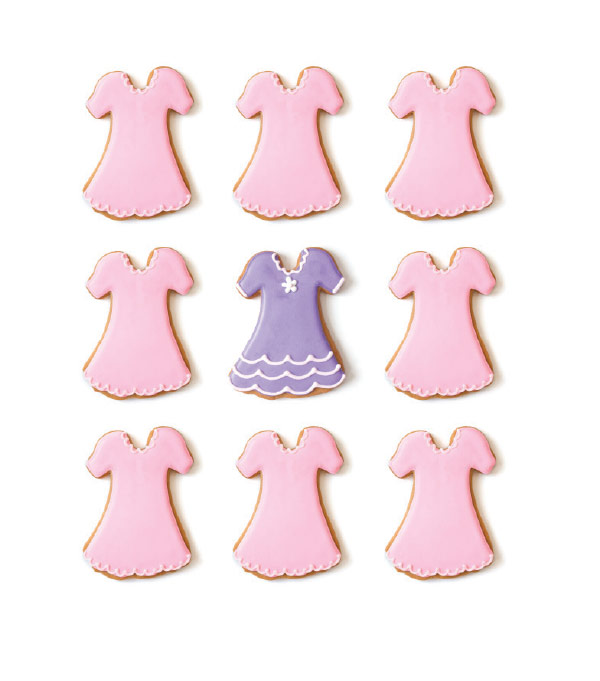Personalization – the No.1 consumer trend this year.
 What’s the No.1 consumer trend this year? Personalization, so says a survey by Business of Fashion and McKinsey Global Fashion. In fact, 70 percent of U.S. consumers expect some degree of personalization from online businesses, according to a recent Linkdex survey. What’s more, shoppers are increasingly willing to hand over personal data in exchange for a more tailored shopping experience that often includes customized merchandise. Alexa, Siri, Google Home, subscription services, direct-to-consumer platforms, etc. are watching, listening and gathering unique data—and consumers are totally cool with that so long as it’s in the name of convenience and customization.
What’s the No.1 consumer trend this year? Personalization, so says a survey by Business of Fashion and McKinsey Global Fashion. In fact, 70 percent of U.S. consumers expect some degree of personalization from online businesses, according to a recent Linkdex survey. What’s more, shoppers are increasingly willing to hand over personal data in exchange for a more tailored shopping experience that often includes customized merchandise. Alexa, Siri, Google Home, subscription services, direct-to-consumer platforms, etc. are watching, listening and gathering unique data—and consumers are totally cool with that so long as it’s in the name of convenience and customization.
When it comes to parents shopping for their kids, personalization is becoming all the rage. In our feature “Picture This” (p. 16), industry experts reveal what’s driving the monogrammed mania in swaddles and bibs, as well as the rise in gender-neutral hues, graphics with witty pop culture references and non-traditional products like baby teethers made to look like fresh kale. Want a hint? It’s social media, particularly Instagram. In an effort to make kids stand out in pictures posted on the platform, many parents are seeking outfits and accessories that express a unique style and enviable family values. Many of these feeds have turned into highly curated catalogs, followed by family, friends and, in some instances, a growing legion of fans. Hence, the need for parents-turned-influencers to impress. An off-the-rack, chain store outfit just doesn’t cut it. Or, as Marie Tillman, founder and CEO of the subscription box service Mac & Mia, says: “Quality and price point are a given, but it’s more about the uniqueness of the product these days. It’s about posting that picture with something really different and having people say, ‘Wow, where’d you get that?’”
Toby Powell, owner of Powell Craft Ltd. and the subject of this month’s Q&A (p. 12), believes personalization is the future of our industry. “It’s all about more bespoke orders,” the British-born exec says, noting that embroidery requests on its best-selling rag dolls are on the rise. Powell adds that customization doesn’t stop at its products—today’s consumers want personalized service, from packaging to delivery to communication before and after the purchase. He is committed to meeting his customers’ ever-changing needs and desires. In fact, Powell’s tireless efforts to expand the family-owned company’s product portfolio since taking the helm in 2004 is an inspiring success story. The company has become a one-stop resource for baby and home, spanning nightgowns, childrenswear, moccasins, nursery accessories, house décor items and gifts. Standing pat is just not a part of Powell’s DNA.
The personalization movement also has roots in the current rebellion against gender stereotypes. Those are being torn down, perhaps nowhere more visibly than in the genderless at birth (a.k.a. “theybies”) movement and the corresponding gender-neutral fashion, juvenile products and toy trend. Our Special Report, “Theyby Steps” (p. 8), shows how our industry is adapting to meet these burgeoning trends. While not in the mainstream yet, they are big enough for some wholesalers to address with gender-neutral collections and for retailers to add designated areas for such merchandise. The sentiment is that it’s better to be ahead of the curve than to play catch-up. While some may deem it a fringe movement and an affront to traditional family values, it opens a world of opportunity for designers to think outside the box. Why be confined to pink or blue? There’s a whole spectrum of possibilities—and potential for increased sales across nearly every children’s category. What’s more, online retailing allows for endless stockrooms. Merchandise that would never have seen a sales floor is a no-risk, drop-ship order away for retailers—a sale that would never have happened otherwise.
While customization has its logistical hurdles and technical challenges, the trend doesn’t look likely to subside any time soon. Consumers have the power to communicate their wants and needs like never before—and those desires are increasingly being met. The monogrammed bib is out of the bag—and there’s no going back. Fortunately, wholesalers and retailers have an unprecedented ability to gather analytics—often with the blessing of customers—to customize merchandise. It’s a matter of giving consumers what they want, because our industry can.



Leave a Comment: